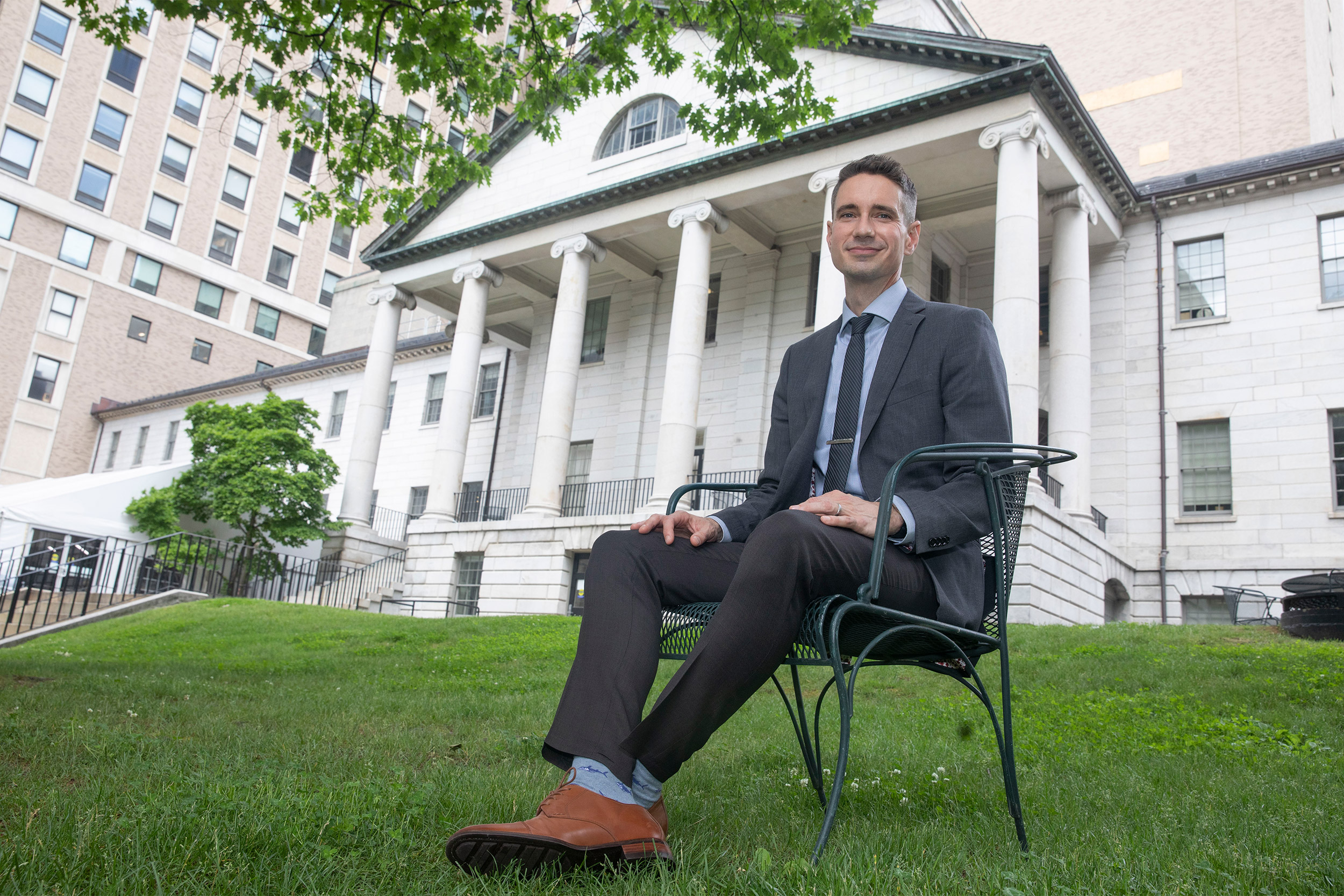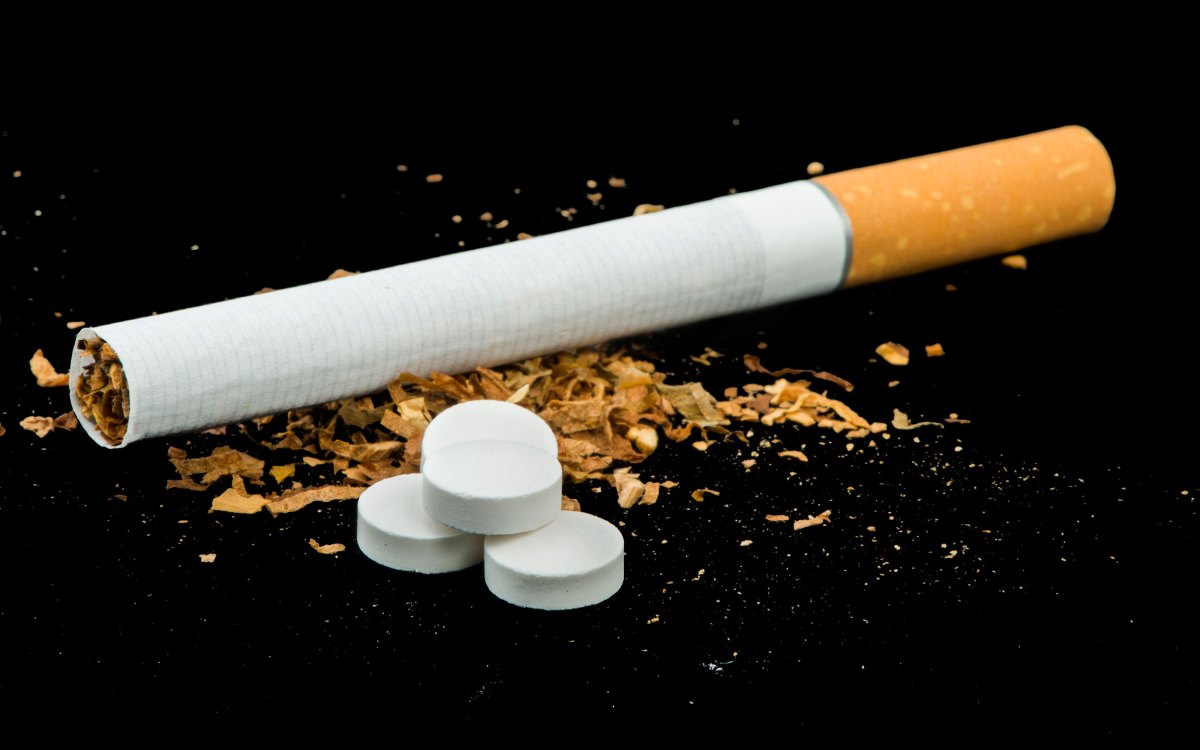
iStock by Getty Images
New CDC guidelines a ‘corrective’ for opioid prescriptions, specialist says
Welcomes shift from stance that may have fueled overdose crisis
In 2016, as the U.S. overdose epidemic raged, the Centers for Disease Control and Prevention issued prescribing guidelines that aimed to reduce excess, unused, and misused opioids. Physicians, health care systems, insurance companies, even state legislatures seized on the guidelines to reduce dosages, shorten prescriptions, or cut off patients from the drugs. But critics viewed the steps as too rigid, affecting treatment for patients dealing with severe pain.
This month, the CDC issued new guidelines that emphasize non-opioid alternatives when available, but also flexibility. Scott Hadland, chief of the Division of Adolescent and Young Adult Medicine at MassGeneral for Children and Harvard Medical School, treats substance abuse among children and adolescents. We talked to him about the new CDC guidelines in a conversation edited for clarity and length.
Q&A
Scott Hadland
GAZETTE: Were the 2016 CDC guidelines the agency’s first for opioid prescriptions?
HADLAND: That’s right. Other national organizations and professional societies have also developed guidelines, but these were among the most impactful opioid-prescribing guidelines — for better or for worse — because they were geared toward primary care physicians across the U.S. I’m currently leading a group developing guidelines for opioid prescribing and pain management in pediatric populations. We’re spending a lot of time and energy trying to avert some of the missteps that occurred when physicians and health systems misinterpreted the CDC’s 2016 guidelines.
GAZETTE: Tell me about those missteps.
HADLAND: The goal was to reduce excessive and unnecessary opioid prescribing, but the guidelines had unintended consequences. Many patients who were doing well on opioids — who were functioning well and benefiting from taking them daily — were forced off the drugs by their physicians, by health systems, or by insurers because of how the guidelines were interpreted. Many people and health care organizations interpreted the guidelines as saying that patients should never be on opioids for long-term pain management. Many doctors stopped prescribing opioids altogether, health care facilities closed down their chronic pain clinics or prevented them from prescribing opioids, and insurers stopped covering long-term opioid prescriptions. The sudden reduction in the number of opioids prescribed nationally probably contributed to more people using heroin and fentanyl, which almost certainly drove up our national overdose rates. Studies have also shown that patients experienced worsened pain when their opioids were discontinued, and as a result, adverse mental health consequences, including suicide.

GAZETTE: What’s the word you would use to describe the revised guidelines, in contrast to 2016?
HADLAND: “Corrective.” The CDC has gone to great effort to highlight the flexibility that clinicians and health systems have with these 2022 guidelines, to make clear that the intent is not for people to stop receiving opioids. The guidelines expound the harms of discontinuing opioids or rapidly tapering them in someone who has been on them long-term. The 2022 guidelines focus on patient-centered care. They ask physicians to exercise caution when they prescribe opioids, and to maximize other pain treatments that are available before using opioids, but to still make opioids available in cases of acute or chronic pain in which the benefits of opioids outweigh their potential risks.
GAZETTE: So from a medical standpoint, there are times when opioids are necessary.
More like this
HADLAND: Absolutely. Opioids are a mainstay of medical practice. They’re very effective medications and are safe when carefully prescribed. Still, in many cases, they should not be the first-line medication. That’s what the 2022 guidelines are trying to highlight. Best practices before prescribing an opioid include maximizing non-medication options — things like physical therapy, meditation, and other non-pharmacologic treatments. When you do use medications, maximize non-opioid options like acetaminophen and ibuprofen, or even topical medications, before adding an opioid.
GAZETTE: Is the greater acceptance of marijuana as a medical treatment relevant to this discussion?
HADLAND: I think it is. Studies suggest that states that have laws allowing medical cannabis, which many people use to manage pain, may have lower rates of opioid misuse. And other studies tell us that one of the most common reasons people misuse prescription opioids or use illicit opioids like heroin or fentanyl is to treat their pain. So medical cannabis may have a role for some adults in managing pain in a way that helps them avoid or minimize opioids.
GAZETTE: What will patients see from these new guidelines?
HADLAND: It really depends on what clinicians, health systems, and insurers do with these new CDC guidelines. My hope is that these guidelines will help everybody recognize that there are times when opioids are appropriate for treating pain, that there are patients who benefit enormously from being on opioids and function better because of them, and that opioids should be continued in cases in which patients are experiencing benefits that outweigh any potential harms. But whether this will happen comes down to whether this guideline is read and implemented into real-world practice.
GAZETTE: Where are we in the wider opioid crisis in America? My sense is that the situation plateaued before the pandemic but has since gotten worse.
HADLAND: Yes. Overdose deaths have spiked dramatically in the wake of COVID. Prior to the pandemic, there was a slowing of overdose deaths. But it’s hard to say that plateauing would have continued if COVID hadn’t happened. This brief plateauing of overdose deaths occurred after more than a decade and a half of rise. I think we probably were going to see overdoses rise again even if COVID hadn’t occurred, because we haven’t addressed some of the major underlying factors, including an illicit drug supply rife with high-potency fentanyl, ongoing high rates of addiction, poor access to addiction treatment and mental health care, inadequate health care coverage, and insufficient prevention for teens. In the adolescent population — the group that I care for — overdose deaths more than doubled from 2019 to 2021. That shows how profoundly impactful the COVID pandemic was because it worsened access to needed addiction care and overdose prevention services, and people’s mental health worsened with the isolation they experienced. About three-quarters of overdose deaths in teens and other age groups are caused by fentanyl, which is illicitly manufactured and not prescribed by doctors. And the contributions of prescription pills to our overdose crisis are less and less as time has gone on.











